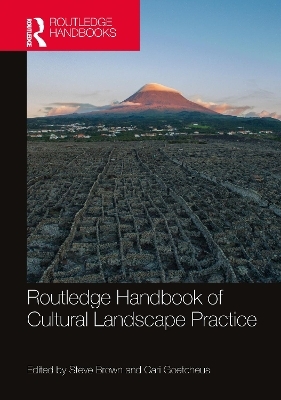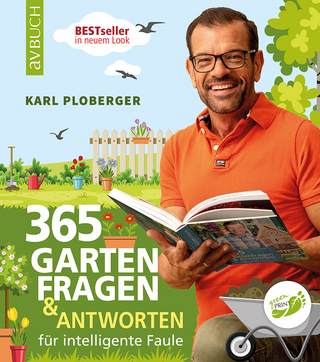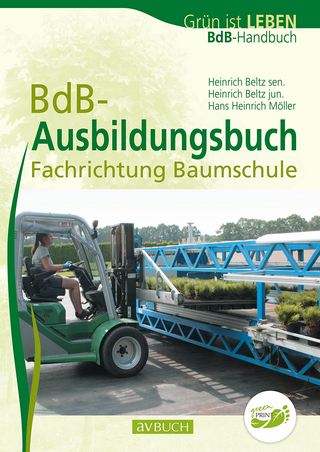
Routledge Handbook of Cultural Landscape Practice
Routledge (Verlag)
978-1-138-70349-0 (ISBN)
Cultural landscapes, which in the field of heritage studies and practice relates to caring for and safeguarding heritage landscapes, is a concept embedded in contemporary conservation. Heritage conservation has shifted from an historical focus on buildings, city centres, and archaeological sites to encompass progressively more diverse forms of heritage and increasingly larger geographic areas, embracing both rural and urban landscapes. While the origin of the idea of cultural landscapes can be traced to the late-19th century Euro-American scholarship, it came to global attention after 1992 following its adoption as a category of ‘site’ by the UNESCO World Heritage Committee. Today, cultural landscape practice has become increasingly complex given the expansion of the values and meanings of heritage, the influence of environmental challenges such as human induced climate change, technological advancements, and the need to better understand and interpret human connections to place and landscapes.
The aim of this handbook is to strike a balance between theory and practice, which we see as inseparable, while also seeking to achieve a geographical spread, disciplinary diversity and perspectives, and a mix of authors from academic, practitioner, management, and community backgrounds.
Steve Brown is an archaeologist, a critical heritage scholar, and heritage practitioner. He is a senior research fellow at the University of Canberra, Australia, a specialist adviser with GML Heritage, and a past president of the ICOMOS-IFLA International Scientific Committee on Cultural Landscapes. Cari Goetcheus is a landscape architect, heritage scholar, and practitioner. She is a professor in the graduate Historic Preservation program, College of Environment + Design (CED) at the University of Georgia (UGA), United States of America, Director of the UGA CED Cultural Landscape Lab, and a member of the ICOMOS-IFLA International Scientific Committee on Cultural Landscapes.
Introduction PART 1 CONCEPTS AND ORIGINS 1.1 From sites as materials to landscape as process 1.2 From preservation to change management and transformation 1.3 From culture and nature as separate to interconnected naturecultures 1.4 From difficult dualisms to entangled complexity PART 2 DOCTRINE AND REGIONAL APPROACHES 2.1 Global doctrines and regional approaches 2.2 The polar regions 2.3 Russian cultural landscape policy and practice 2.4 A Southern African cultural landscape approach: The Stellenbosch heritage inventory 2.5 The legal and legislative framework of the cultural landscapes of North Africa and Southwest Asia 2.6 A critique on policies related to cultural landscapes in India 2.7 Cultural Landscapes in northeast Asia 2.8 Central Asian cultural landscapes: Practices and policies 2.9 Cultural Landscapes in southeast Asia 2.10 Australian cultural landscape approaches 2.11 Europe – and its landscape convention 2.12 Cultural landscapes in Latin America and the Caribbean 2.13 Cultural landscape policy and practice in Canada 2.14 United States of American cultural landscape policy and practice PART 3 FRAMING CULTURAL LANDSCAPE PRACTICE 3.1 Cultural landscapes: Toward an integrated management framework 3.2 Identifying cultural landscapes: The Indigenous cultural landscape of Taputapuatea and the historic goldmining landscape of central Victoria 3.3 Documenting cultural landscapes 3.4 Assessing the heritage significance of landscapes – some reflections from Australia 3.5 Social value: Identifying, documenting, assessing community connections 3.6 A legal framework for cultural landscape protection utilising the United States as an example 3.7 Stewardship of cultural landscapes: Management and governance 3.8 Presenting cultural landscapes: Getting to the truth of ourselves? PART 4 CASE STUDIES 4.1 Case studies: Learning-by-doing 4.2 Cultural landscapes in outer space 4.3 Cultural heritage, cultural landscape: Protecting the SOUL of Aotearoa, New Zealand 4.4 Mangyol Village, Yap: A Micronesian social landscape 4.5 Culture, contingency and queerness in a reclaimed landscape 4.6 Pastoral cultural landscapes, working the country for stock grazing: An Australian case study 4.7 Aquaculture: Budj Bim Cultural Landscape, Australia 4.8 Joseon literati’s garden as a nature-friendly and place-oriented cultural landscape of Korea 4.9 Community participation in heritage conservation: Longan cultural landscape, Taiwan 4.10 West Lake Cultural Landscape of Hangzhou: ‘Oriental lake with cultural meanings’ 4.11 ‘The First Celestial Mountain in the World’: Wudang Mountains Scenic and Historic Interest Area, China 4.12 Conceptualising spiritscapes: The Petroglyphic Complexes of the Mongolian Altai World Heritage site and the wider biocultural landscape 4.13 A landscape approach to reviving traditional water systems in a historic town in India 4.14 Constructed emptiness: The Namib Desert as terra nullius 1786-2018 4.15 Urban landscape as ecosystem: Berlin 4.16 The Burren, Ireland: Land of paradox 4.17 The Pico and Santa Maria vineyards: ‘heroic viticulture’ in The Azores 4.18 Registers of transience: Heritage and urban change 4.19 Chinampa: A Mesoamerican–prehispanic cultivation system of Xochimilco, Mexico PART 5 CHALLENGES, OPPORTUNITIES, AND FUTURE DIRECTIONS 5.1 Visualising heritage landscapes in future: aesthetics, embodiment, and meaning 5.2 Cultural landscapes: Tackling the challenges of climate change 5.3 Digital technologies in heritage practice 5.4 Sustainability, landscape, and heritage futures 5.5 Challenges, opportunities, and future directions: Conflict and resolution 5.6 Changing economies, changing politics: A perspective from the United Kingdom
| Erscheinungsdatum | 16.08.2021 |
|---|---|
| Reihe/Serie | Routledge International Handbooks |
| Zusatzinfo | 19 Tables, black and white; 3 Line drawings, black and white; 104 Halftones, black and white; 107 Illustrations, black and white |
| Verlagsort | London |
| Sprache | englisch |
| Maße | 174 x 246 mm |
| Gewicht | 1080 g |
| Themenwelt | Kunst / Musik / Theater |
| Sachbuch/Ratgeber ► Natur / Technik ► Garten | |
| Reisen ► Reiseführer | |
| Geisteswissenschaften ► Geschichte ► Hilfswissenschaften | |
| Naturwissenschaften ► Biologie ► Ökologie / Naturschutz | |
| Naturwissenschaften ► Geowissenschaften ► Geografie / Kartografie | |
| Technik ► Architektur | |
| ISBN-10 | 1-138-70349-4 / 1138703494 |
| ISBN-13 | 978-1-138-70349-0 / 9781138703490 |
| Zustand | Neuware |
| Informationen gemäß Produktsicherheitsverordnung (GPSR) | |
| Haben Sie eine Frage zum Produkt? |
aus dem Bereich


